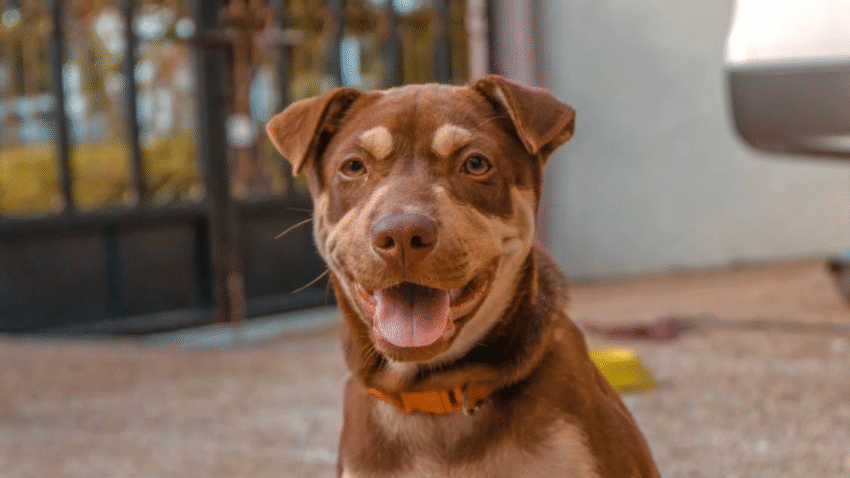Introduction
Thinking about trimming your pup’s hair yourself? Learning how to give your dog a haircut at home can save you time and money while keeping your dog comfortable and clean between professional grooming sessions. In this guide, we’ll walk you through the tools, steps, and tips you need to safely and effectively groom your dog at home.
Why Home Haircuts Matter for Dogs
Regular grooming helps more than just appearance—it supports your dog’s overall health. Trimming excess fur can:
- Prevent mats and tangles
- Keep skin clean and dry
- Reduce shedding
- Improve hygiene around the face, paws, and rear
- Help detect lumps, bumps, or skin issues early
Giving your dog a haircut at home builds trust and can be a calm bonding experience if done correctly.
Step-by-Step Guide to Giving Your Dog a Haircut at Home
1. Know Your Dog’s Coat Type
Different breeds and coat types require different techniques:
- Single coats (Boxers, Dalmatians): No need for haircuts, just brushing
- Double coats (Golden Retrievers, Huskies): Avoid shaving; trim lightly
- Curly coats (Poodles, Bichons): Need regular haircuts
- Long-haired breeds (Shih Tzus, Yorkies): Require trimming every 4–6 weeks
Research your breed’s grooming needs or consult your vet or groomer.
2. Gather the Right Tools
Before starting, make sure you have:
- Dog-specific grooming clippers with guards
- Sharp grooming scissors with rounded tips
- Slicker brush or comb
- Detangling spray (optional)
- Dog shampoo and conditioner (if you plan to bathe before cutting)
- Towels and treats for comfort
- A grooming table or a nonslip surface
Never use human clippers—they can overheat and don’t work well on dog fur.
3. Bathe and Brush First
Clean, tangle-free hair is easier and safer to cut.
- Give your dog a warm bath using dog-safe shampoo
- Dry them thoroughly with a towel or blow dryer on low heat
- Brush out tangles and mats using a slicker brush
- Use detangling spray if needed to loosen knots
Never cut through mats with scissors. If mats are severe, consult a professional groomer.
4. Start with the Right Mindset
Stay calm and patient. Dogs sense your energy, so speak gently and give praise.
Tips to create a relaxed grooming environment:
- Use a quiet room without distractions
- Play soft background music
- Let your dog sniff the tools before starting
- Take breaks if needed
If your dog is extremely anxious, consider spreading the haircut over multiple days.
5. Begin Clipping in Sections
Use clippers with the appropriate guard length. Start with longer guards until you’re more confident.
Suggested order:
- Back and sides – Use slow, smooth strokes with the grain of the fur
- Neck and chest – Be extra gentle near the throat
- Belly and underarms – Lift legs carefully and use a shorter guard
- Rear and sanitary areas – Trim carefully around the tail and rear for hygiene
Use scissors to trim feathering on legs, tail, and around the ears.
6. Trim the Face and Paws Last
These areas require extra caution. Use grooming scissors with rounded tips.
- Eyes: Trim hair obstructing vision by cutting small bits at a time
- Ears: Avoid cutting inside the ears—just tidy the edges
- Paws: Trim the fur between paw pads and around the toes
- Muzzle: Trim the beard and whisker area for cleanliness
If your dog gets restless, save the face for another session.
7. Give Lots of Praise and Rewards
Reward your dog throughout the process. Use treats after each section or break to reinforce positive behavior. End the session with praise, play, or a favorite snack.
Common Mistakes to Avoid
1. Cutting Through Mats
This can cause injury or pain. Mats should be carefully brushed out or clipped with a mat remover tool.
2. Using Dull Scissors or Clippers
Dull tools pull hair and can lead to uneven cuts or skin irritation. Keep your blades sharp and clean.
3. Cutting Against the Grain
Always trim in the direction the fur grows for a smoother finish and to avoid cuts or irritation.
4. Not Watching the Blade Temperature
Clippers can overheat after prolonged use. Check the blade frequently and let it cool if it feels hot.
5. Shaving a Double-Coated Dog
Breeds with double coats should not be shaved. It can damage their natural insulation and lead to overheating or sunburn.
Extra Tips & Recommendations
Tip 1: Use a Grooming Table or Raised Surface
A table with a non-slip mat keeps your dog secure and reduces strain on your back. For small dogs, a kitchen counter with a towel may work.
Tip 2: Trim Hair Every 4–6 Weeks
For most breeds that need haircuts, a regular grooming schedule keeps the coat healthy and manageable.
Tip 3: Watch for Skin Issues
Use grooming time to check for lumps, bumps, dry patches, or parasites. Early detection can prevent health problems.
Conclusion
Giving your dog a haircut at home may feel intimidating at first, but with the right tools, patience, and preparation, it becomes a routine part of your care. Stick to calm sessions, go slow, and always prioritize your dog’s comfort and safety. The more you practice, the better you—and your pup—will feel about it!
🐾 Bookmark us for more step-by-step dog grooming tips and home care guides!
